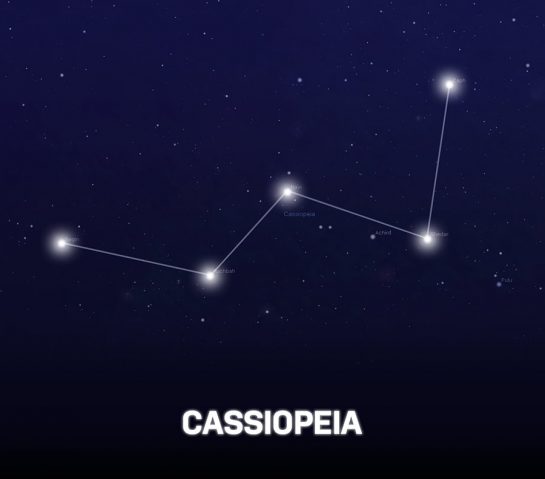

Use the constellation chart in the center of the February or March Sky & Telescope. ■ With the Moon gone and Monoceros walking across the south behind Orion as if being led by a rope, now's a fine time to trace out the Unicorn's big, dim stick figure.

If you're new at this, start with brighter, easier constellations and save the shy Giraffe until you get good at it. Unless you have a really dark sky, you'll need binoculars to work out its loose, faint, nondescript pattern using the constellation chart in the center of Sky & Telescope - a challenge project that will build your skills for correctly relating what you see in binoculars to what you see, much smaller, on a sky map. ■ High in the northern sky these dark evenings, in the seemingly empty wastes between Capella overhead and Polaris due north, sprawls big, dim Camelopardalis, the Giraffe - perhaps the biggest often-visible constellation you don't know. Sirius, by comparison, is only 8.6 light-years away - and being so near, it shines some 400 times brighter than the entire cluster.
CASSIOPEIA BRIGHTEST STAR PATCH
Can you see a little patch of gray haze, very faintly speckled if your sky is good and dark? That's the open star cluster M41, about 2,200 light-years away.

Four degrees is somewhat less than the width of a typical binocular's or finderscope's field of view. Using binoculars or a scope at low power, examine the spot 4° south of Sirius (directly below it when on the meridian). ■ Sirius blazes high in the south on the meridian by about 8 or 9 p.m. It and the rest are about 560 light-years away. They show best in binoculars.Īlpha Per, a white supergiant, is a true member of the group and its brightest light. At least a dozen are 6th magnitude or brighter. It lies on the lower-right edge of the Alpha Persei Cluster: a large, elongated, very loose swarm of fainter stars about the size of your thumbtip at arm's length. The brightest star between Cassiopeia and the zenith at that time (for the world's mid-northern latitudes) is Alpha Persei or Mirfak, magnitude 1.8. ■ Right after night turns completely dark, the W of Cassiopeia shines high in the northwest, standing almost on end. Have you been watching the Venus-Mars-Mercury triangle at dawn? It continues to change and lengthen this week, with Mercury getting a little lower each morning. now, depending on how far east or west you live in your time zone. When to look? Right when Beta Canis Majoris - Murzim the Announcer, the star about three finger-widths to the right of Sirius - is at its highest due south over your landscape. Canopus crosses due south 21 minutes before Sirius does.

And there you'll need an open, flat south horizon. That's far enough south that it never appears above your horizon unless you're below latitude 37° N (southern Virginia, southern Missouri, central California). In one of the many interesting coincidences that devoted skywatchers know about, Canopus lies almost due south of Sirius, by 36°. ■ On these February evenings Canopus, the second-brightest star after Sirius, lurks either just below or just above your south horizon (for mid-northern latitudes).


 0 kommentar(er)
0 kommentar(er)
